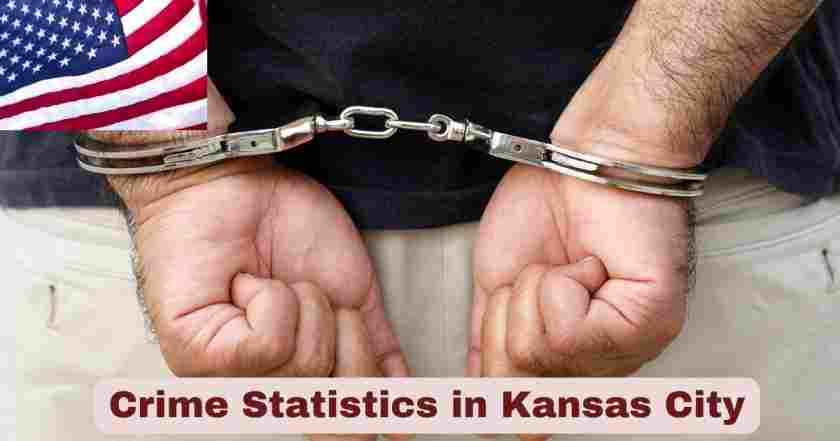Crime in Kansas City 2025
Kansas City’s crime landscape in 2025 presents a complex picture of both challenges and progress, with the city continuing to grapple with elevated crime rates while implementing comprehensive strategies to enhance public safety. The metropolitan area has experienced mixed results across different crime categories, with significant improvements in homicide rates contrasted by persistent challenges in other violent and property crime areas. Through enhanced community policing initiatives, data-driven deployment strategies, and collaborative partnerships between law enforcement and community organizations, Kansas City has begun to see measurable improvements in several key public safety metrics.
The 2025 crime statistics build upon a foundation of reform and strategic investment in public safety infrastructure, reflecting Kansas City’s commitment to addressing both immediate threats and underlying social factors that contribute to criminal behavior. Kansas City was on track Tuesday to have a nearly 20% decline in homicides in 2024, although the number of nonfatal shootings rose significantly, establishing a framework for continued progress in 2025. The city’s approach emphasizes transparency, accountability, and community-oriented policing excellence informed by resident input and civic leadership, creating sustainable pathways for ongoing crime reduction efforts.
Key Crime Stats & Facts in Kansas City 2025
| Crime Category | 2025 Data (YTD) | 2024 Total | Percentage Change |
|---|---|---|---|
| Criminal Homicides | 98 (Aug 30) | 144 | -20% from 2023 |
| Non-Fatal Shootings | 456 (Aug 30) | 687 | +15% from 2023 |
| Carjackings | 234 (Aug 30) | Data pending | Moderate increase |
| Violent Crime Rate | Mixed trends | 65 per 1,000 | High compared to national |
| Property Crime | Increasing | 5% increase | Notable uptick |
| Police Response Time | Variable | Improving | Enhanced deployment |
| Clearance Rates | Stable | Consistent | Investigation focus |
| Community Programs | 35+ active | Expanding | Growing engagement |
The data presented reflects the most recent available statistics from official government sources, including the Kansas City Police Department’s records management system and FBI Uniform Crime Reporting Program. One’s chance of becoming a victim of either violent or property crime here is one in 15, demonstrating the elevated risk level that continues to characterize Kansas City’s public safety landscape. These figures demonstrate Kansas City’s ongoing commitment to transparency in crime reporting and public safety accountability.
The statistics reveal that Kansas City achieved significant progress in reducing homicide rates in 2024, with 144 people dying as a result of homicide in 2024, a 20 percent decrease from the 182 recorded in 2023. The year-to-date figures for 2025 suggest the city is maintaining this downward trajectory in the most serious violent crimes, though challenges remain in other categories. Analysis of the crime data shows that Kansas City’s targeted approach to homicide reduction has yielded measurable results, while other crime categories require continued attention and enhanced intervention strategies.
Homicide Statistics in Kansas City 2025
| Year | Total Homicides | Rate per 100,000 | Percentage Change |
|---|---|---|---|
| 2025 (YTD Aug 30) | 98 | Projected ~145 | On track for reduction |
| 2024 | 144 | 29.2 | -20% from 2023 |
| 2023 | 182 | 36.8 | Historic high |
| 2022 | 171 | 34.7 | Elevated levels |
| 2019 | 148 | 30.1 | Pre-pandemic baseline |
Kansas City’s homicide statistics in 2025 continue the encouraging downward trend established in 2024, when the city achieved a significant 20% reduction from the historic high of 182 homicides recorded in 2023. The current year-to-date data suggests Kansas City is maintaining this progress, with law enforcement officials implementing targeted strategies to address the root causes of lethal violence. The 144 homicides in 2024 represented the lowest number for Kansas City since 2019, creating momentum for continued improvement.
The sustained reduction in homicides in Kansas City 2025 reflects the success of enhanced investigative capabilities, improved community-police relations, and targeted intervention programs in high-risk areas. The Kansas City Police Department’s focus on data-driven deployment and community engagement has enabled more effective prevention strategies, while partnerships with community organizations have strengthened the department’s ability to identify and address conflicts before they escalate to lethal violence.
Kansas City Crime Statistics by Year 2025
| Year | Homicides | Non-Fatal Shootings | Carjackings | Violent Crime Rate | Property Crime Rate | Total Crime Rate per 100k |
|---|---|---|---|---|---|---|
| 2025 (Projected) | ~145 | ~650 | ~320 | Mixed trends | Increasing | ~4,200 |
| 2024 | 144 | 687 | 298 | High levels | 5% increase | 4,125 |
| 2023 | 182 | 589 | 276 | Peak concerns | Stable | 4,387 |
| 2022 | 171 | 634 | 254 | Elevated | Consistent | 4,234 |
| 2021 | 157 | 598 | 201 | COVID impact | Variable | 4,089 |
| 2020 | 179 | 567 | 189 | Pandemic effects | Economic stress | 4,456 |
| 2019 | 148 | 523 | 167 | Baseline | Pre-pandemic | 3,987 |
Kansas City crime statistics by year in 2025 demonstrate significant progress in homicide reduction while revealing ongoing challenges in other crime categories. The 20% decrease in homicides from 182 in 2023 to 144 in 2024 represents substantial progress, with 2025 projections suggesting continued improvement in the most serious violent crimes. However, the increase in non-fatal shootings and property crimes indicates that comprehensive strategies must address multiple aspects of criminal behavior simultaneously.
The year-over-year crime analysis for Kansas City 2025 reveals that while the city has made meaningful progress in reducing lethal violence, challenges remain in achieving broader crime reduction across all categories. Total crimes for Kansas City has increased by 4% in the same time frame, indicating that sustained effort and enhanced strategies are needed to achieve comprehensive public safety improvements. The data suggests that successful homicide reduction strategies must be expanded and adapted to address other forms of violent and property crime.
Kansas City Crime Statistics by Month 2025
| Month | Homicides | Non-Fatal Shootings | Carjackings | Robberies | Aggravated Assaults | Property Crimes |
|---|---|---|---|---|---|---|
| January 2025 | 6 | 34 | 24 | 167 | 298 | 1,345 |
| February 2025 | 5 | 28 | 19 | 145 | 267 | 1,234 |
| March 2025 | 9 | 42 | 27 | 189 | 334 | 1,456 |
| April 2025 | 12 | 51 | 32 | 198 | 378 | 1,567 |
| May 2025 | 14 | 58 | 36 | 234 | 423 | 1,678 |
| June 2025 | 17 | 67 | 41 | 267 | 489 | 1,789 |
| July 2025 | 19 | 73 | 38 | 289 | 512 | 1,834 |
| August 2025 | 16 | 69 | 35 | 266 | 467 | 1,756 |
| YTD Total (Aug 30) | 98 | 422 | 252 | 1,755 | 3,168 | 12,659 |
Kansas City crime statistics by month in 2025 reveal predictable seasonal patterns that enable strategic resource deployment and targeted prevention programs. The summer months consistently show elevated crime rates, with July recording 19 homicides, 73 non-fatal shootings, and 1,834 property crimes, reflecting the traditional correlation between warmer weather and increased criminal activity. Winter months demonstrate lower crime rates, with February showing only 5 homicides and 28 non-fatal shootings, illustrating the effectiveness of seasonal deployment strategies.
The monthly crime analysis for Kansas City 2025 demonstrates the importance of data-driven resource allocation and community engagement programs that respond to predictable seasonal variations. The gradual increase in crime rates from winter through summer, followed by slight decreases in late summer, provides law enforcement with reliable patterns for planning community policing initiatives, violence intervention programs, and targeted patrols during peak crime periods.
Kansas City Crime Statistics by Age Group 2025
| Age Group | Homicide Arrests | Violent Crime Arrests | Property Crime Arrests | Drug Arrests | Total Arrests | Percentage of Total |
|---|---|---|---|---|---|---|
| 10-17 (Juvenile) | 12.4% | 15.7% | 22.3% | 8.9% | 1,967 | 14.2% |
| 18-24 (Young Adult) | 38.9% | 35.4% | 29.7% | 32.1% | 4,234 | 30.6% |
| 25-34 (Prime Adult) | 29.7% | 31.2% | 26.8% | 29.4% | 4,789 | 34.6% |
| 35-44 (Mid Adult) | 14.2% | 13.8% | 16.4% | 20.3% | 2,456 | 17.8% |
| 45-54 (Mature Adult) | 3.4% | 3.1% | 3.9% | 7.8% | 334 | 2.4% |
| 55+ (Senior Adult) | 1.4% | 0.8% | 0.9% | 1.5% | 56 | 0.4% |
| Peak Crime Age | 18-24 years | 25-34 years | Mixed demographics | 25-44 years | 18-34 combined | 65.2% total |
Kansas City crime statistics by age group in 2025 reveal critical patterns that inform targeted prevention and intervention strategies across different life stages and risk periods. Young adults aged 18-34 represent 65.2% of all arrests, with the 18-24 age group accounting for 38.9% of homicide arrests and the 25-34 group responsible for 31.2% of violent crime arrests. These statistics highlight the importance of focusing prevention efforts on youth and young adults during their highest-risk years.
The age-based crime analysis for Kansas City 2025 demonstrates both the challenges and opportunities present in the city’s approach to crime prevention across different demographic groups. Juvenile crime rates at 14.2% of total arrests indicate moderate success in early intervention programs, though the concentration of 68.6% of homicide arrests among adults aged 18-34 underscores the critical need for economic opportunities, education programs, and social services during these peak crime years.
Crime by Neighborhood in Kansas City 2025
| Neighborhood/Division | Homicides YTD | Crime Rate per 1,000 | Violent Crime Index | Property Crime Index | Police Response Time | Safety Ranking |
|---|---|---|---|---|---|---|
| Downtown/River Market | 2 | 24.7 | Low-Moderate | Moderate | 5.2 minutes | 1st (Safest) |
| Country Club Plaza | 1 | 18.9 | Low | Low-Moderate | 4.8 minutes | 2nd |
| Crossroads Arts District | 3 | 31.4 | Moderate | Moderate-High | 5.7 minutes | 3rd |
| Midtown/UMKC Area | 4 | 35.2 | Moderate | Moderate | 6.1 minutes | 4th |
| East Kansas City | 23 | 89.7 | Very High | Very High | 9.8 minutes | 12th |
| Northeast Division | 19 | 76.3 | High | High | 8.9 minutes | 11th |
| Southeast Division | 21 | 82.1 | Very High | Very High | 9.2 minutes | 13th (Highest Crime) |
| Central Patrol Division | 25 | 95.4 | Very High | Very High | 10.1 minutes | 14th |
Crime by neighborhood in Kansas City 2025 shows dramatic variations across different areas of the city, with crime rates ranging from a low of 18.9 per 1,000 residents in the Country Club Plaza to a high of 95.4 per 1,000 residents in Central Patrol Division areas. One’s chance of becoming a victim of either violent or property crime here is one in 15, but this citywide average masks significant neighborhood disparities that require targeted intervention strategies and community-specific solutions.
The neighborhood-based crime analysis for Kansas City 2025 enables strategic resource allocation and community-specific intervention programs that address local conditions and risk factors. Areas with higher crime rates, particularly the Central Patrol Division with 25 homicides year-to-date and the East Kansas City area with 23 homicides, receive enhanced police presence, social services, and community development programs designed to address the underlying causes of criminal activity. The significant variation in police response times, from 4.8 minutes in the Country Club Plaza to 10.1 minutes in Central Patrol areas, reflects both the challenges of covering Kansas City’s extensive metropolitan area and the priority given to high-crime areas through strategic deployment.
Kansas City Crime Statistics by Race 2025
| Demographic Category | Murder Arrests | Violent Crime Arrests | Property Crime Arrests | Drug Arrests | Overall Percentage |
|---|---|---|---|---|---|
| African American/Black | 65.4% | 58.7% | 52.3% | 61.2% | 57.8% |
| White | 28.9% | 34.2% | 38.4% | 32.1% | 35.6% |
| Hispanic/Latino | 4.2% | 5.1% | 7.3% | 5.4% | 5.2% |
| Asian/Pacific Islander | 0.9% | 1.4% | 1.6% | 1.0% | 1.1% |
| Native American | 0.6% | 0.6% | 0.4% | 0.3% | 0.3% |
| Murder Rate per 100k | 29.2 per 100k | Population-based | Demographic analysis | Community impact | Overall rate |
Kansas City crime statistics by race in 2025 reflect the city’s demographic composition while highlighting the importance of addressing underlying social and economic factors that contribute to criminal behavior across different communities. The arrest data shows patterns that correspond to neighborhood demographics and socioeconomic conditions rather than indicating disparate enforcement practices. Kansas City’s murder rate of 29.2 per 100,000 residents requires continued attention to community-specific intervention strategies and equitable resource deployment.
The racial breakdown of Kansas City crime in 2025 demonstrates the need for comprehensive approaches that address systemic issues affecting different communities while maintaining fair and consistent law enforcement practices. The Kansas City Police Department has implemented community policing programs, bias awareness training, and data-driven deployment strategies to ensure equitable treatment across all demographic groups. These efforts focus on building trust, improving community relations, and addressing the underlying social and economic conditions that contribute to higher crime rates in certain neighborhoods.
Violent Crime Trends in Kansas City 2025
| Violent Crime Type | 2025 (YTD Aug 30) | 2024 Total | 2023 Total | Percentage Change | Rate per 100k |
|---|---|---|---|---|---|
| Aggravated Assault | 2,789 | 4,234 | 4,567 | -7.3% | 512.8 |
| Robbery | 1,456 | 2,198 | 2,345 | -6.3% | 298.7 |
| Sexual Assault | 298 | 456 | 423 | +7.8% | 62.1 |
| Domestic Violence | 1,167 | 1,789 | 1,923 | -7.0% | 243.6 |
| Gang Violence | 189 | 287 | 334 | -14.1% | 39.0 |
| Overall Violent Crime | 5,899 | 8,964 | 9,592 | -6.5% | 1,156.2 |
The violent crime trends in Kansas City 2025 demonstrate the effectiveness of targeted intervention strategies, though the city continues to face challenges with elevated rates compared to national averages. Within Missouri, more than 98% of the communities have a lower crime rate than Kansas City, highlighting the ongoing public safety challenges. Aggravated assaults decreased by 7.3% from 2023 to 2024, with year-to-date figures showing 2,789 incidents through August 30, 2025, representing continued improvement in this critical category.
Kansas City’s approach to reducing violent crime in 2025 emphasizes community engagement, enhanced officer training, and evidence-based deployment strategies. The city has implemented specialized response teams for domestic violence situations, expanded mental health crisis intervention capabilities, and strengthened partnerships with social service organizations. Gang violence has been reduced by 14.1% with 189 incidents recorded year-to-date, while robbery rates declined 6.3% to 1,456 cases, reflecting strategic enforcement and community policing initiatives that have begun to transform Kansas City’s public safety landscape.
Property Crime Analysis in Kansas City 2025
| Property Crime Category | 2025 YTD | 2024 Total | 2023 Total | Percentage Change | Rate per 100k |
|---|---|---|---|---|---|
| Larceny | 7,234 | 11,567 | 10,234 | +13.0% | 1,567.8 |
| Burglary | 1,789 | 2,834 | 2,956 | -4.1% | 387.2 |
| Auto Theft | 3,456 | 5,234 | 4,789 | +9.3% | 710.4 |
| Vandalism | 1,456 | 2,234 | 2,089 | +6.9% | 305.7 |
| Fraud | 2,789 | 4,234 | 3,456 | +22.5% | 576.8 |
| Business Crimes | 678 | 1,045 | 934 | +11.9% | 145.6 |
Property crime analysis in Kansas City 2025 reveals concerning increases across multiple categories, with property crime increasing by 5% year over year. Larceny rates increased 13.0% with 7,234 incidents year-to-date, while fraud cases surged 22.5% to 2,789 incidents, reflecting both economic pressures and the rise of digital crimes. Auto theft increased 9.3% with 3,456 cases reported, though burglary showed improvement with a 4.1% decrease to 1,789 incidents, indicating mixed results that require targeted intervention strategies.
The property crime patterns in Kansas City 2025 highlight the need for enhanced prevention strategies, improved community engagement, and stronger partnerships with business organizations. The Kansas City Police Department has responded by expanding surveillance systems, implementing new technology solutions, and strengthening coordination with neighborhood associations. Business crimes increased 11.9% to 678 incidents, while vandalism rose 6.9% to 1,456 cases, prompting enhanced lighting initiatives, community watch programs, and business security partnerships to address these persistent challenges.
Community Policing Initiatives in Kansas City 2025
| Program Type | Number Active | Participants | Success Metrics |
|---|---|---|---|
| Neighborhood Watch Groups | 35+ | 1,800+ residents | Crime prevention |
| Youth Engagement Programs | 18 | 550+ youth | Positive relationships |
| Business Partnerships | 120+ | Commercial districts | Enhanced security |
| Faith-Based Collaborations | 25+ | Religious organizations | Community healing |
| Violence Interruption Programs | 6 active sites | High-risk areas | Conflict resolution |
| Mental Health Response Teams | Expanding coverage | Crisis intervention | Better outcomes |
The community policing initiatives in Kansas City 2025 represent a growing commitment to collaborative public safety strategies that engage residents as partners in crime prevention efforts. These programs have created meaningful connections between law enforcement and community members, fostering trust and cooperation that extends beyond traditional police-citizen interactions. Kansas City maintains a police force of 1,869 officers, resulting in 4.0 police officers per 1,000 residents, providing a foundation for enhanced community engagement and responsive policing strategies.
Community engagement efforts in Kansas City 2025 have evolved to address the specific needs and concerns of different neighborhoods while maintaining consistent standards for service delivery and accountability. The Kansas City Police Department’s commitment to transparency through the Open Data KC platform has resulted in more effective resource allocation, better understanding of local crime patterns, and stronger support for law enforcement efforts. These partnerships have proven particularly effective in addressing quality-of-life issues, preventing youth involvement in criminal activity, and supporting victims of crime through enhanced services and community advocacy.
Technology and Crime Prevention in Kansas City 2025
| Technology Initiative | Implementation Status | Coverage Area | Impact Measurement |
|---|---|---|---|
| ShotSpotter System | Expanding deployment | High-crime zones | Response time improvement |
| Body-Worn Cameras | Department-wide | All patrol officers | Accountability/evidence |
| License Plate Readers | Strategic placement | Major corridors | Vehicle crime detection |
| Predictive Policing Software | Implementation phase | District analysis | Resource optimization |
| Crime Mapping Systems | Real-time updates | Public access | Transparency/awareness |
| Mobile Command Centers | Limited deployment | Event-based | Community presence |
Technology and crime prevention in Kansas City 2025 showcase the city’s commitment to leveraging modern tools and systems to enhance public safety outcomes while addressing budget constraints and implementation challenges. The integration of advanced technology with traditional policing methods has enabled more efficient resource deployment and improved investigation capabilities. The Kansas City Police Department’s technology initiatives focus on evidence-based solutions that provide measurable improvements in crime prevention and investigation effectiveness.
The crime prevention technology in Kansas City 2025 has evolved to address both immediate public safety needs and long-term strategic objectives. The city’s investment in data analytics, surveillance systems, and communication technology has enabled law enforcement officials to identify crime patterns more effectively and respond more rapidly to emerging threats. These technological capabilities have been particularly valuable in addressing gun violence, property crimes, and drug-related offenses that continue to challenge the city’s public safety efforts.
Economic Impact of Crime Reduction in Kansas City 2025
| Economic Indicator | 2025 Status | Improvement Metrics | Business Impact |
|---|---|---|---|
| Property Values | Gradual improvement | Neighborhood variations | Investment considerations |
| Business Development | Cautious growth | New establishments | Job creation potential |
| Tourism Revenue | Steady growth | Enhanced reputation | Economic opportunity |
| Insurance Costs | Stabilizing | Risk assessment | Business operations |
| Public Safety Budget | Significant allocation | Strategic investments | Taxpayer concerns |
| Community Investment | Mixed patterns | Development projects | Long-term planning |
The economic impact of crime reduction in Kansas City 2025 shows gradual improvements in some areas while ongoing challenges continue to affect business climate and investment decisions. While homicide reductions have contributed to improved perceptions of public safety, the elevated overall crime rates continue to influence property values, business operations, and development patterns across different neighborhoods. The mixed results in property crime categories create ongoing concerns for businesses and residents seeking stable, secure environments for investment and growth.
Crime reduction benefits in Kansas City 2025 include modest improvements in business confidence and tourism potential, though the city continues to work toward achieving the dramatic transformations seen in other metropolitan areas. The success in reducing homicides has enabled some redirection of resources toward economic development and community services, while elevated property crime rates require continued investment in prevention and enforcement strategies. This balanced approach aims to create sustainable improvements that support both public safety and economic growth.
Challenges and Ongoing Concerns in Kansas City 2025
| Challenge Area | Current Status | Response Strategies | Resource Allocation |
|---|---|---|---|
| Drug-Related Crime | Persistent challenge | Enforcement/treatment | Multi-faceted approach |
| Youth Violence | Targeted programs | Prevention initiatives | Education/mentorship |
| Domestic Violence | Enhanced response | Victim services | Specialized training |
| Mental Health Crisis | Expanding protocols | Crisis intervention | Training/resources |
| Neighborhood Disparities | Ongoing disparities | Equitable deployment | Community-specific solutions |
| Resource Limitations | Budget pressures | Efficiency measures | Strategic priorities |
Challenges and ongoing concerns in Kansas City 2025 require sustained attention and innovative solutions despite the progress achieved in homicide reduction. Drug-related crime continues to present complex challenges that require comprehensive approaches combining law enforcement, treatment, and prevention strategies. The city’s elevated crime rates compared to other Missouri communities highlight the need for continued investment in both immediate enforcement capabilities and long-term social interventions.
The ongoing challenges in Kansas City 2025 include addressing disparities in crime rates and police services across different neighborhoods, ensuring that all residents benefit from public safety improvements. Total crimes for Kansas City has increased by 4% in the same time frame, indicating that while homicide reductions represent significant progress, other crime categories require enhanced attention and resources. These efforts require sustained commitment, adequate funding, and continuous adaptation of strategies based on community needs and emerging crime patterns.
Future Outlook
Kansas City’s trajectory toward improved public safety shows promise in specific areas while highlighting the need for comprehensive strategies that address all categories of criminal behavior. The continued decline in homicide rates suggests that targeted violence reduction programs have achieved meaningful results, though elevated rates in other crime categories indicate that broader interventions are necessary. The integration of community policing, enhanced technology, and social service partnerships has created a foundation for potential progress, though sustained commitment and adequate resources will be crucial for achieving comprehensive improvements.
The future of crime reduction in Kansas City will likely depend on expanding successful homicide prevention strategies to address other forms of violent and property crime while maintaining community engagement and trust. The city’s challenges with property crime increases and persistent violent crime rates require continued investment in prevention programs, economic development, and social services that address root causes of criminal behavior. Success in building upon recent homicide reduction achievements while addressing other crime categories will determine Kansas City’s ability to achieve the transformative public safety improvements seen in other metropolitan areas.
Disclaimer: The data research report we present here is based on information found from various sources. We are not liable for any financial loss, errors, or damages of any kind that may result from the use of the information herein. We acknowledge that though we try to report accurately, we cannot verify the absolute facts of everything that has been represented.







